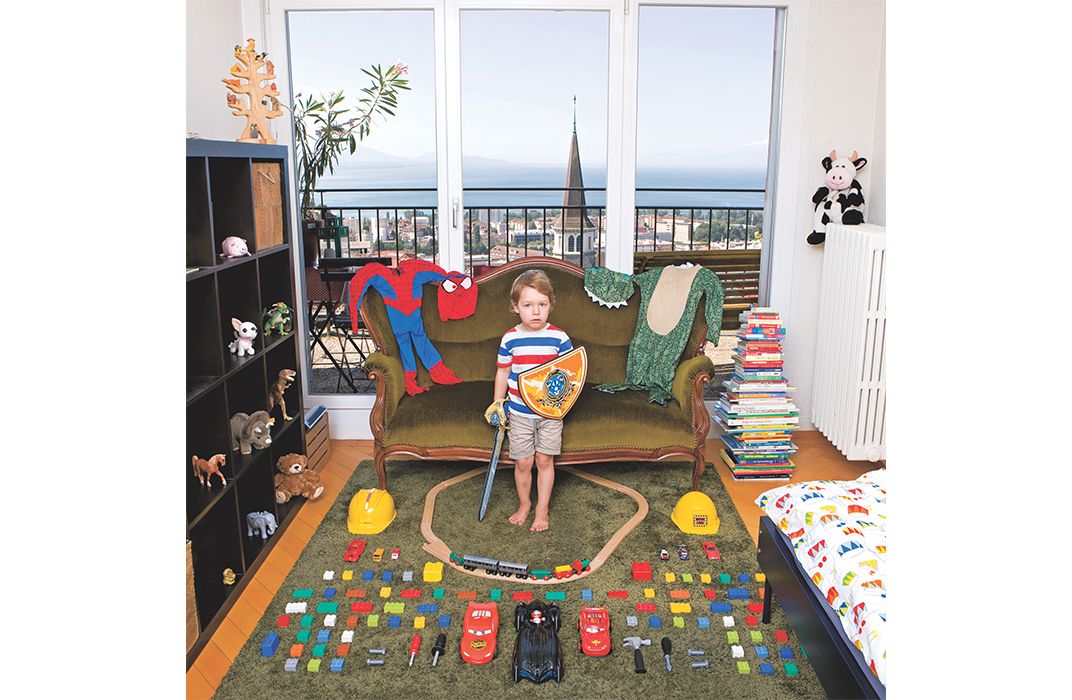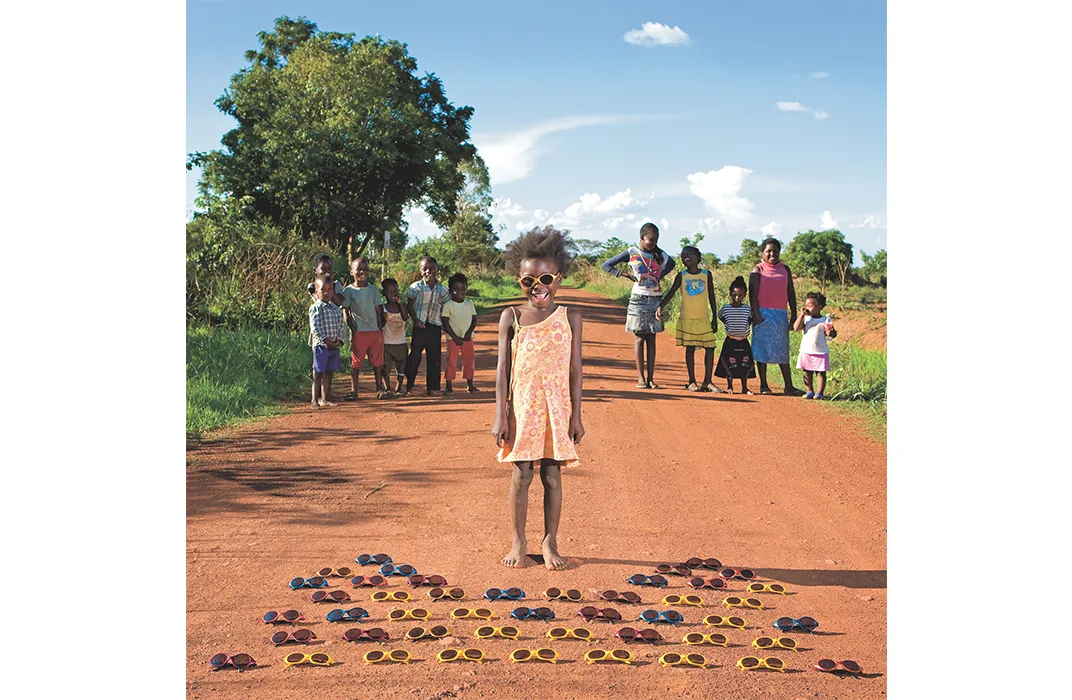Adorable Children Around the World Pose With Their Favorite Toys
In photographer Gabriele Galimberti’s new book, kids stand amongst their most prized possessions
To create his book, Toy Stories: Photos of Children from Around the World and Their Favorite Things, Gabriele Galimberti traveled to 58 countries over the course of 30 months, photographing kids with their toys and taking readers of all ages back to their childhood with memories of their own favorite playthings.
While working on this project, Galimberti spent almost the whole day with the families of the children photographed in his book. Referring to those times in an email he wrote, "every single story and experience is somehow memorable." But above all, he says his favorite story is about Maudy, who he found in Zambia. Galimberti was in a remote area of the country where it was nearly impossible to find children playing with toys, but he was lucky enough to find Maudy a few days after she found a box full of sunglasses on the road. Her mother thought it had fallen off a truck, and by the time Galimberti arrived all the children were all playing with them.
Galimberti originally came up with the idea for the project almost four years ago, while photographing his friend's daughter Alessia. "I went to their house, a big farm in the Tuscan country side, and I found Alessia playing with the cows. She was feeding the animals using her little toys. I asked her to put all the toys on the floor and to pose for me there, together with the cows," wrote Galimberti.
He liked the resulting photo and decided to continue the project in every country he visited while he traveled the world for a two-year project on CouchSurfing for the Italian magazine D La Repubblica. "All the children that I have photographed are somehow connected to the couchsurfers that have hosted me along my long trip. They are their children, their nephews, or simply their neighbors."
Galimberti vividly recalled a shoot with a boy named Taha in Beirut, Lebanon. "When I went to their home to photograph him, he didn't want to pose for me. He was crying a lot and even more when I was trying to touch his little car (the only toy he has) to organize the photo," said Galimberti in an email. After 15 minutes, Galimberti felt so bad he was ready to give up. But Taha's mother continued pushing Galimberti to take the photo. "She said, 'You need to have a Palestinian boy for your project, you have to take a picture of my son.' So I spent almost 2 hours waiting for her to convince Taha to pose for me." He finally stopped crying for three minutes and Galimberti made the portrait.
The simplicity of Galimberti's images make them beautiful and touching. He usually tried just one layout for each image. If the children had few toys, it could take as little as five minutes to take a portrait, but for kids with lots of toys that needed organizing, Galimberti says it could take a few hours. He chose to take photos of children between ages 3 and 6 because all they do is play -- there's no school or any commitments in their way.
Working on this project, Galimberti found it interesting how children's favorite toys reflected their living situations. In Nopaltepec, Mexico, he met Abel, a four-year-old whose favorite toys, trucks arranged like a convoy, were similar to the ones Galimberti saw driving to and from a major sugar cane plantation down the road from his home. He also saw that the fewer toys children had, the more willing they were to share and let Galimberti arrange them. Children who enjoyed playing outside in the country also seemed less possessive of their toys. But time and again throughout his book there are similarities between children living on opposite sides of the world. A few have a favorite stuffed animal; others have favorite trucks, cars or trains. Between all 54 portraits in Galimberti's book, everyone is bound to find an image that reminds them of themself or someone they knew as a child.

/https://tf-cmsv2-smithsonianmag-media.s3.amazonaws.com/filer/c5/2e/c52e5711-df2d-49e6-8d40-678ebb574aa9/toystories_p007.jpg)
/https://tf-cmsv2-smithsonianmag-media.s3.amazonaws.com/filer/f2/2b/f22bf174-a036-4574-9bf5-77d12199a722/toystories_p009.jpg)
/https://tf-cmsv2-smithsonianmag-media.s3.amazonaws.com/filer/02/f1/02f1765d-6dc0-4211-88e7-167e5551352f/toystories_p029.jpg)
/https://tf-cmsv2-smithsonianmag-media.s3.amazonaws.com/filer/8c/e4/8ce414cc-cecb-4535-b0d5-e95f65d134ea/toystories_p021.jpg)

/https://tf-cmsv2-smithsonianmag-media.s3.amazonaws.com/filer/e8/06/e8068e67-dba2-4f64-9c84-78fdb617e819/toystories_p043.jpg)
/https://tf-cmsv2-smithsonianmag-media.s3.amazonaws.com/filer/33/c3/33c3a86e-1963-4baf-9e4a-3f87646a43d4/toystories_p051.jpg)
/https://tf-cmsv2-smithsonianmag-media.s3.amazonaws.com/filer/b6/d6/b6d6737f-1b7b-4a71-a89a-2dcd1ff64820/toystories_p047.jpg)
/https://tf-cmsv2-smithsonianmag-media.s3.amazonaws.com/filer/92/5e/925e9d76-8dcf-4114-ae7e-68d6a446ba83/toystories_p073.jpg)
/https://tf-cmsv2-smithsonianmag-media.s3.amazonaws.com/filer/e8/63/e86375f9-5658-4af8-9eaa-f596874992c5/toystories_p077.jpg)
/https://tf-cmsv2-smithsonianmag-media.s3.amazonaws.com/filer/b3/68/b3681ead-afe0-40ea-a81c-6b9393b948de/toystories_p107.jpg)
/https://tf-cmsv2-smithsonianmag-media.s3.amazonaws.com/filer/26/c6/26c6a57f-24fb-4b6e-bfe0-cdf680c081dc/toystories11749jf.jpg)